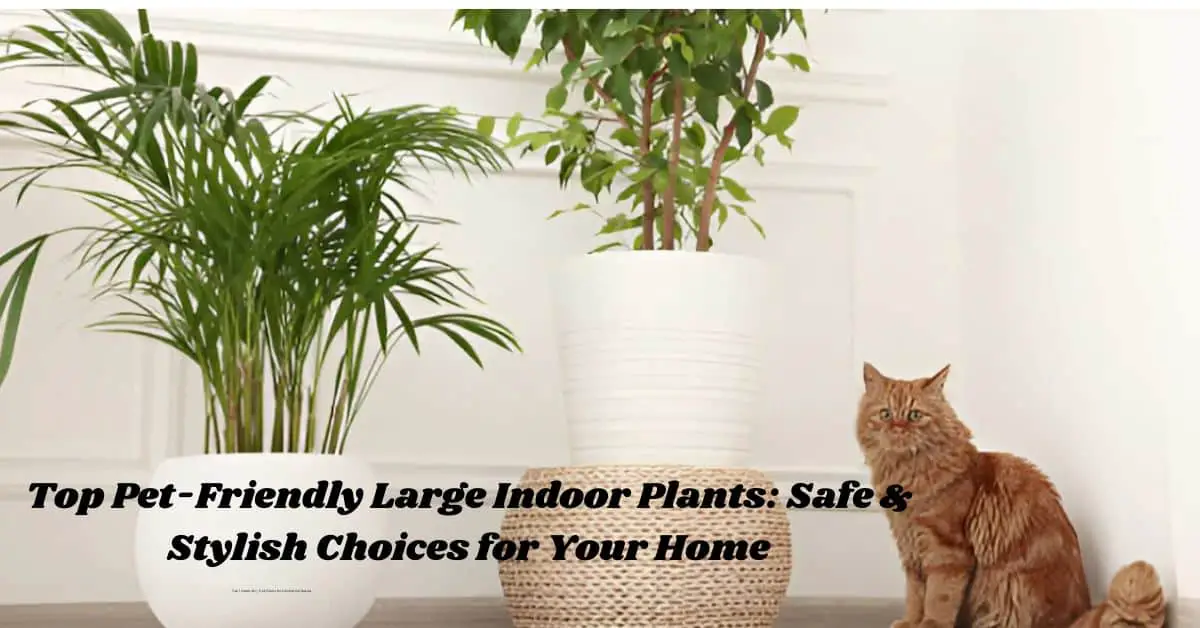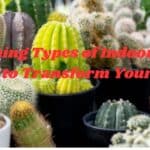Decorating your home with large indoor plants can create a stunning and vibrant atmosphere. However, for pet owners, finding the right plants that are both beautiful and safe for furry friends can be challenging. Many common houseplants can be toxic to cats and dogs, which is why it’s important to choose pet-friendly large indoor plants.
In this guide, we will explore the best large indoor plants that are safe for pets and provide tips on how to care for them. Whether you’re a pet owner with a green thumb or just starting out, these plants are perfect for creating a pet-friendly, lush environment in your home.
Table of Contents
Why Choose Pet-Friendly Indoor Plants?
Many indoor plants are toxic to pets, and ingestion can lead to a range of health issues, from mild stomach upset to more severe conditions like organ failure. As a pet owner, it’s essential to select plants that not only enhance your home decor but also keep your furry companions safe. Pet-friendly plants are non-toxic, ensuring that even if your cat or dog takes a nibble, they won’t be harmed.
Additionally, large indoor plants offer a dramatic visual impact, filling spaces with greenery while also improving air quality and creating a relaxing atmosphere.
Top 5 Pet-Friendly Large Indoor Plants
- Areca Palm (Dypsis lutescens):
The Areca Palm, also known as the butterfly palm, is a large, graceful plant with feathery fronds that bring a tropical vibe to your home. This plant is non-toxic to both cats and dogs, making it a perfect choice for pet-friendly households. It thrives in bright, indirect light and requires regular watering to keep the soil moist.- Light: Bright, indirect light
- Watering: Water when the top inch of soil is dry
- Size: Can grow up to 7-8 feet indoors
- Parlor Palm (Chamaedorea elegans):
Another great option is the Parlor Palm, a low-maintenance, pet-friendly plant that can grow quite large over time. This plant has a soft, airy appearance and is safe for pets to be around. It’s ideal for homes with lower light conditions and doesn’t require frequent watering.- Light: Low to medium light
- Watering: Water when the soil feels dry
- Size: Can reach 4-6 feet indoors
- Spider Plant (Chlorophytum comosum):
The Spider Plant is known for its long, arching leaves and ability to thrive in various conditions. While it typically grows in hanging baskets, when given space, it can grow large enough to be considered a floor plant. Spider Plants are non-toxic to pets and are particularly hardy, making them a favorite among beginner plant enthusiasts.- Light: Bright, indirect light
- Watering: Water when the top inch of soil is dry
- Size: Can grow up to 2-3 feet
- Calathea (Calathea orbifolia):
Calatheas are known for their striking, patterned leaves and are entirely safe for pets. While these plants may require a little more attention in terms of humidity and watering, their beauty is well worth the effort. Large varieties like Calathea orbifolia can grow tall and wide, making them a standout feature in any room.- Light: Low to medium indirect light
- Watering: Keep soil consistently moist but not waterlogged
- Size: Can grow up to 2-3 feet
- Boston Fern (Nephrolepis exaltata):
Ferns, in general, are excellent pet-friendly plants, and the Boston Fern is no exception. It has lush, arching fronds that add a touch of elegance to any room. While it prefers a humid environment, it can adapt to most indoor spaces and is safe for pets.- Light: Bright, indirect light
- Watering: Keep soil moist, but not soggy
- Size: Can grow up to 3-4 feet wide
How to Care for Large Pet-Friendly Indoor Plants
- Lighting Requirements:
Many large indoor plants thrive in bright, indirect light, but it’s important to understand the specific needs of each plant. For instance, palms like the Areca and Parlor Palm prefer bright spaces, while Calatheas can tolerate lower light levels. - Watering:
Overwatering is one of the most common mistakes plant owners make. Ensure the plant’s pot has good drainage, and water only when the top layer of soil is dry to the touch. Ferns and Calatheas prefer more consistent moisture, while Spider Plants and Palms are more drought-tolerant. - Humidity:
Large plants like ferns thrive in more humid environments, making them ideal for bathrooms or kitchens. If your home is dry, consider using a humidifier or misting the plants regularly to replicate their natural habitat. - Repotting and Fertilizing:
As these plants grow, they may need to be repotted every couple of years. Use a high-quality, well-draining potting mix and fertilize during the growing season (spring and summer) to keep your plants healthy and thriving.
Why Large Indoor Plants Are Perfect for Commercial Spaces
For businesses, large indoor plants not only enhance the aesthetic appeal of commercial spaces but also promote a healthier environment. Pet-friendly plants are especially beneficial for businesses such as:
- Pet-Friendly Hotels & Airbnbs:
Offering a safe, inviting space for pets and their owners can enhance customer satisfaction. - Pet Grooming & Veterinary Clinics:
Large indoor plants can create a calming atmosphere, helping to reduce stress for both pets and their owners during visits. - Offices and Co-working Spaces:
Greenery can improve air quality, boost employee morale, and create a more inviting environment for employees and clients alike.
By selecting large, pet-friendly indoor plants, commercial spaces can enjoy the benefits of nature without worrying about potential harm to visiting pets.
Conclusion
Pet-friendly large indoor plants are the perfect solution for pet owners who want to enjoy the beauty of houseplants without worrying about their furry friends’ safety. From the lush, tropical vibe of the Areca Palm to the elegance of the Boston Fern, these plants will enhance your home decor while keeping your pets safe.
Whether you’re a homeowner or looking to spruce up a commercial space, choosing non-toxic plants that are both stylish and safe will create a harmonious environment for everyone. For more indoor plant inspiration, tips, and advice, visit Indoor Plant Plants.










